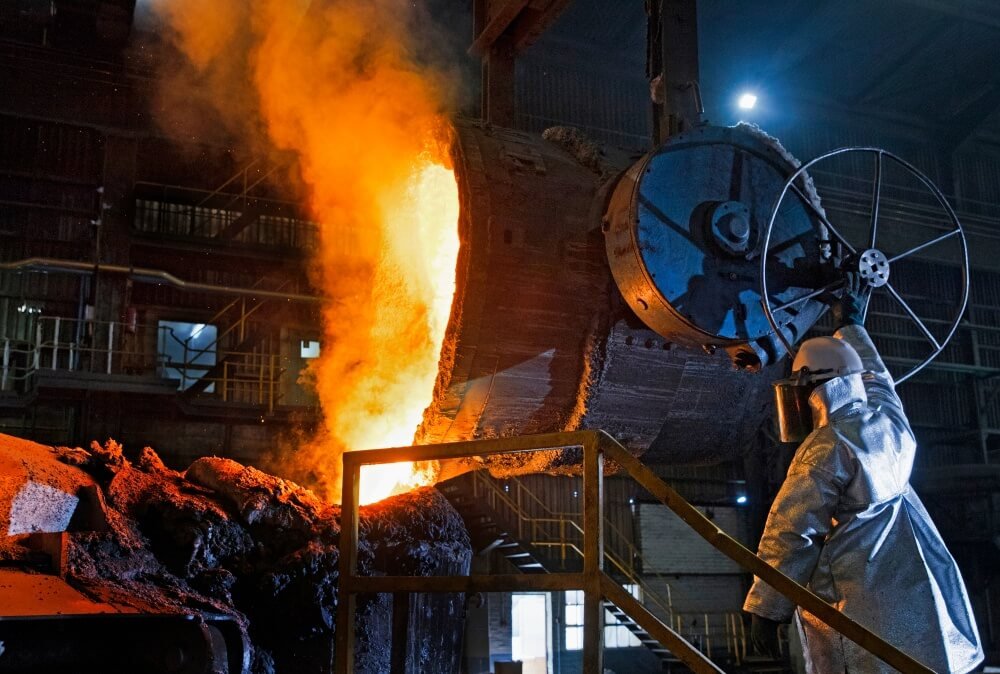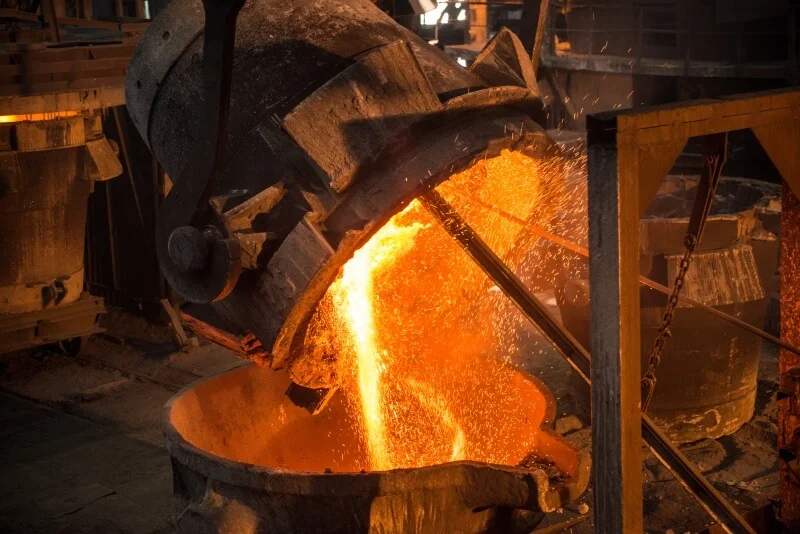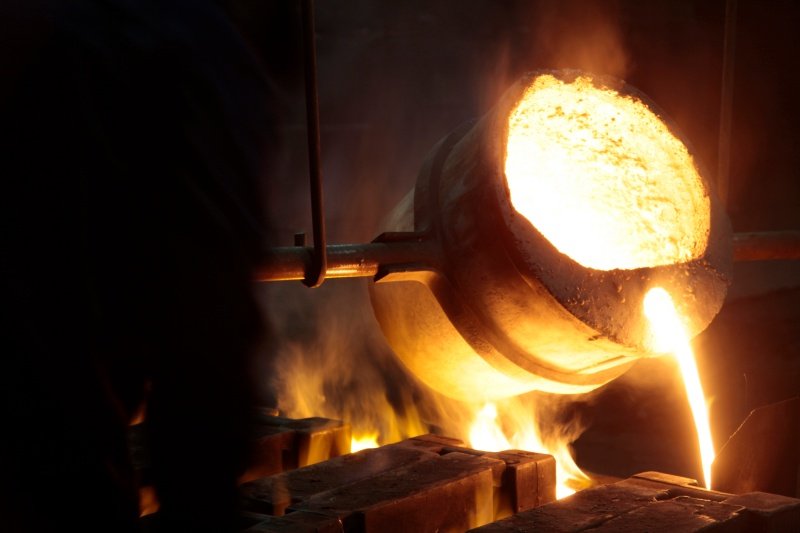Choosing a material that is strong yet lightweight for complex components can feel overwhelming. The wrong selection often results in costly production issues such as hot cracking, reduced wear resistance, or project delays. This guide simplifies the decision-making process by examining the most widely used high strength aluminum casting alloys, ensuring you can confidently select the right alloy that balances strength, corrosion resistance, machinability, and cost to meet your project’s exact demands.

What are high strength aluminum casting alloys?
Defining these essential materials
These unique aluminum alloys get superior mechanical strength from specific metallurgical additions. Here’s the deal: this combination gives them properties for demanding applications. Key alloying elements that define their performance include:
- Silicon (Si)
- Copper (Cu)
- Magnesium (Mg)
Why is alloy composition important?
Specific elements like silicon improve fluidity for casting, while copper increases hardness and strength. You might be wondering, how does this affect you? The right composition directly impacts your final part’s performance, durability, and production success.
Common alloy series (3xx.x, 4xx.x)
The 3xx.x and 4xx.x series are the workhorses of the die casting industry. What’s the bottom line? Understanding these series helps you quickly narrow your options based on your primary requirements. Key Takeaway: The specific blend of elements in an alloy is the primary determinant of its casting behavior and final mechanical properties.
| Alloy Series | Primary Elements | General Characteristics |
|---|---|---|
| 3xx.x | Silicon (Si), Copper (Cu), Magnesium (Mg) | Good strength and castability. The most widely used series. |
| 4xx.x | Silicon (Si) | Excellent castability and pressure tightness. |
| 5xx.x | Magnesium (Mg) | Good corrosion resistance and surface finish. |
This table shows how alloy series are grouped by their main alloying elements, which dictates their fundamental properties.
Uses for high strength aluminum casting alloys
Applications in the automotive industry
These alloys are widely used in automotive for creating lightweight yet robust parts. But wait, there’s more. This usage is critical for improving fuel efficiency without sacrificing safety or performance. Common examples include:
- Engine blocks
- Transmission cases
- Structural components
Aerospace and marine part examples
Alloys with excellent corrosion resistance are vital for marine hardware, while a high strength-to-weight ratio is crucial for aerospace fittings. Think about this for a moment. These industries demand reliable performance in the harshest environments.
Are they used in consumer electronics?
Yes, they provide durable, lightweight housings for laptops, cameras, and other high-end electronics. Now, here’s the interesting part. The material allows for complex, thin-walled designs that are still very strong. Key Takeaway: The versatility of high strength aluminum casting alloys makes them indispensable across automotive, aerospace, and consumer electronics industries for their unique combination of properties.
| Industry | Common Alloys | Key Application Examples |
|---|---|---|
| Automotive | A380, B390 | Engine blocks, pistons, gear cases |
| Aerospace/Marine | A360, 518 | Hardware fittings, structural brackets |
| Electronics | A380, 383 | Laptop housings, camera bodies |
This matching demonstrates how specific alloys are chosen to meet the unique demands of different industries.
A380 high strength aluminum casting alloys
What are A380’s key properties?
A380 is the most popular and versatile alloy, offering a great combination of mechanical properties, castability, and thermal conductivity. Here’s the deal. It’s the go-to choice for a vast range of general-purpose applications. Its main characteristics include:
- Good strength and hardness
- Excellent castability
- Good thermal conductivity
Common applications for A380
You can find A380 in products like workbench vises, lawnmower housings, and gear cases. The reality is, you have likely used a product made with A380 without even knowing it. Key Takeaway: A380’s balanced properties and ease of casting make it the workhorse alloy for countless consumer and industrial products.
| Property | Value |
|---|---|
| Tensile Strength | 47 ksi |
| Hardness (Brinell) | 80 HB |
| Elongation | 3.5% |
The technical data confirms A380’s suitability for applications requiring good strength and moderate ductility.
A360 high strength aluminum casting alloys
How does A360 excel in resistance?
A360 is a superior alternative to A380 when corrosion resistance is a top priority, due to its lower copper content. What does this mean for you? It’s ideal for parts exposed to harsh weather or corrosive environments.
- A360: Excellent corrosion resistance
- A380: Fair corrosion resistance
Ideal uses for A360 alloys
Applications where this property is crucial include outboard motor parts, instrument cases, and irrigation system components. It gets better. A360 also offers excellent pressure tightness for leak-proof designs. Key Takeaway: A360 should be your choice over A380 when superior corrosion resistance and pressure tightness are non-negotiable.
| Feature | A360 | A380 |
|---|---|---|
| Corrosion Resistance | Excellent | Fair |
| Pressure Tightness | Excellent | Good |
| Ease of Casting | Good | Excellent |
This comparison highlights the clear trade-offs between A360’s durability and A380’s superior castability.
383 high strength aluminum casting alloys
What makes 383 good for intricate parts?
The 383 alloy is chosen for its superior die-filling capability, making it perfect for components with complex shapes and thin walls. Why is this important? It reduces the risk of casting defects in complicated designs. Its properties include:
- Excellent die-filling characteristics
- Improved resistance to hot cracking
- Very good machinability
Where is 383 commonly found?
You can find it in power tools, home appliances, and engine brackets where complex geometry is common. Here’s a simple breakdown. If a part is intricate, 383 is often the answer. Key Takeaway: 383 alloy is the preferred solution when your component design is complex and requires filling thin sections without defects.
| Property | 383 | A380 |
|---|---|---|
| Die Filling | Excellent | Good |
| Hot Cracking Resistance | Excellent | Very Good |
| Strength | Good | Slightly Higher |
This shows that 383 is chosen for its process advantages in complex castings, even with slightly lower strength than A380.
A413 high strength aluminum casting alloys
A413 and its excellent pressure tightness
A413 is the premier choice for pressure-tight applications due to its high silicon content, which gives it great fluidity and reduces shrinkage. The bottom line is this: it is perfect for parts that need to be leak-proof. Its key features are:
- Excellent fluidity in the mold
- Minimal solidification shrinkage
- Excellent castability
Typical parts made from A413
Examples include dental equipment, outboard motor pistons, and street lamp housings. You might be surprised. Its excellent castability makes it suitable for large, thin-walled castings. Key Takeaway: A413 is the specialist alloy for creating pressure-tight, leak-proof components, especially those with thin walls.
| Property | Value |
|---|---|
| Tensile Strength | 42 ksi |
| Corrosion Resistance | Excellent |
| Machinability | Fair |
The data indicates A413 prioritizes castability and pressure tightness over post-cast machinability.
B390 high strength aluminum casting alloys
Why is B390 known for wear resistance?
B390’s high silicon content (16-18%) gives it exceptional hardness and wear resistance, making it suitable for high-friction environments. What’s the catch? It is more difficult to machine than other alloys. The high silicon content provides:
- High hardness
- Excellent abrasion resistance
- Low coefficient of thermal expansion
High-friction applications for B390
Its use in internal combustion engines includes parts like pistons, cylinder heads, and brake cylinders where constant friction occurs. Let me break it down for you. This alloy is built to withstand constant rubbing and abrasion. Key Takeaway: B390 is the specialized choice for components that must endure high wear and friction, despite its challenging machinability.
| Alloy | Wear Resistance | Machinability |
|---|---|---|
| B390 | Excellent | Fair |
| A380 | Good | Good |
| 518 | Poor | Excellent |
This comparison clearly positions B390 as the leader in wear resistance at the cost of ease of machining.
518 high strength aluminum casting alloys
What are 518’s finishing characteristics?
The 518 alloy stands out for its excellent performance in post-casting finishing, including superior machinability and suitability for anodizing. The real story is… it provides a beautiful, high-quality surface finish. Its advantages include:
- Excellent for anodizing
- Excellent machinability
- High corrosion resistance
Where is the 518 alloy best used?
Applications where aesthetics and corrosion resistance are key include marine hardware, conveyor parts, and architectural castings. It’s as simple as this: when looks matter, 518 is a top contender. Key Takeaway: 518 is the ideal alloy when the final part requires a superior cosmetic finish, excellent machinability, and strong corrosion resistance.
| Feature | 518 | A360 | A380 |
|---|---|---|---|
| Anodizing Quality | Excellent | Good | Good |
| Corrosion Resistance | Excellent | Excellent | Fair |
| Strength | Good | Good | Very Good |
This demonstrates that 518 excels in finishing and corrosion properties, making it a premium choice where aesthetics are paramount.
Choosing high strength aluminum casting alloys
Balancing cost vs. performance
You must weigh the trade-offs between raw material cost, ease of casting, and desired final performance. Let’s get straight to the point. The cheapest alloy is not always the most cost-effective solution in the long run.
What final product properties do you need?
Create a checklist of non-negotiable properties, such as mechanical strength, thermal conductivity, or corrosion resistance. This is where it gets interesting. Prioritizing your needs is the most important step in selection. Key properties to rank include:
- Strength
- Ductility
- Hardness
- Corrosion Resistance
Considering post-cast processing
The need for machining, welding, or surface treatments like anodizing heavily influences the best alloy choice. But here’s the kicker… choosing an alloy with poor machinability can skyrocket your finishing costs. Key Takeaway: A holistic view of the entire production process, from casting to final finishing, is essential for selecting the right alloy.
| Priority | Alloy 1 Rating (1-5) | Alloy 2 Rating (1-5) | Alloy 3 Rating (1-5) |
|---|---|---|---|
| Strength | |||
| Cost | |||
| Corrosion Resistance | |||
| Machinability |
This matrix provides a simple framework for you to compare alloys based on your project’s specific priorities.
Process for high strength aluminum casting alloys
How are casting defects avoided?
Choosing the right alloy helps mitigate common die casting defects like hot cracking and die soldering. The truth is, a well-chosen alloy is your first line of defense against production issues. The alloy’s chemistry directly influences its behavior in the mold.
What is die soldering?
Die soldering is when molten aluminum sticks to the steel die, damaging both the part and the tool. So, what can you do? Selecting an alloy with high anti-soldering properties, like those with balanced iron content, is critical for high-volume production.
The importance of hot cracking resistance
Hot cracking occurs during solidification, and alloys with excellent resistance (e.g., A380, A360) are more forgiving. What’s the bottom line? This property ensures part integrity and reduces scrap rates. Key Takeaway: Alloy selection is just as critical for a smooth manufacturing process as it is for the final product’s performance.
| Casting Defect | Preventive Alloy Characteristic |
|---|---|
| Hot Cracking | Good strength at high temperatures; wide freezing range. |
| Die Soldering | Low copper content; balanced iron content. |
| Poor Fluidity | High silicon content. |
This table directly links common casting problems to the alloy properties that can solve them.
Conclusion
You now have the knowledge to navigate the complexities of high strength aluminum casting alloys and make an informed decision that avoids costly mistakes. For expert guidance tailored to your project, partner with our team of engineers to use our state-of-the-art die casting services—contact us today for a free quote. We are committed to delivering not just high-quality parts, but engineered solutions that drive your success from prototype to production.
FAQ
Q1: Can I improve the corrosion resistance of an alloy like A380? Yes, while A380 has fair corrosion resistance, you can improve it significantly with post-casting surface treatments like powder coating or anodizing. However, for maximum inherent resistance, choosing an alloy like A360 or 518 is a better starting point.
Q2: What’s the best high strength aluminum casting alloy for high-temperature use? Alloys used in engine components, like B390, are designed to perform well in high-temperature environments. Their composition provides good strength retention and stability when exposed to heat.
Q3: Can high strength aluminum casting alloys be welded after casting? Some can, but it depends on the alloy. Alloys with lower silicon content are generally more weldable. However, welding cast aluminum can be challenging and may require special techniques and pre-heating to prevent cracking.
Q4: What’s the best alloy choice if my part needs a perfect, polished cosmetic finish? Alloy 518 is the top choice for parts requiring an excellent cosmetic finish. It offers superior machinability, responds very well to polishing and anodizing, and provides a high-quality surface appearance.
Q5: How does the die casting process itself affect the final strength of an alloy? The high-pressure die casting process creates a fine-grained surface structure, which enhances strength. However, factors like cooling rate, injection pressure, and the presence of internal porosity can all impact the final mechanical properties of the part.




